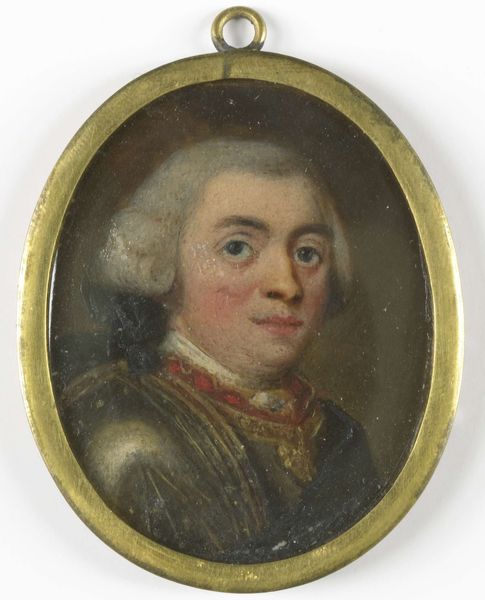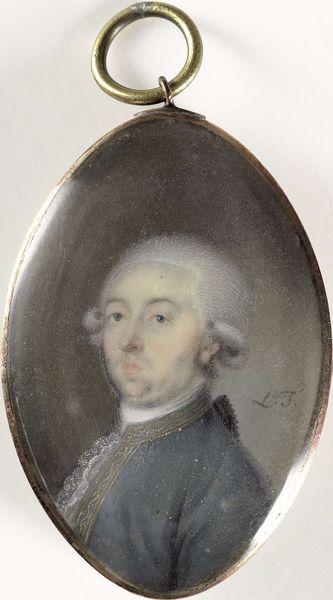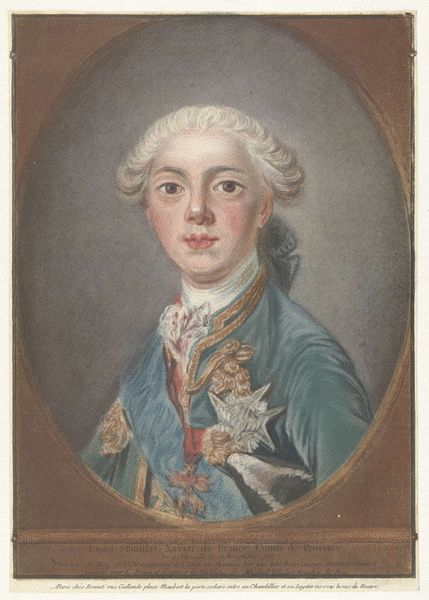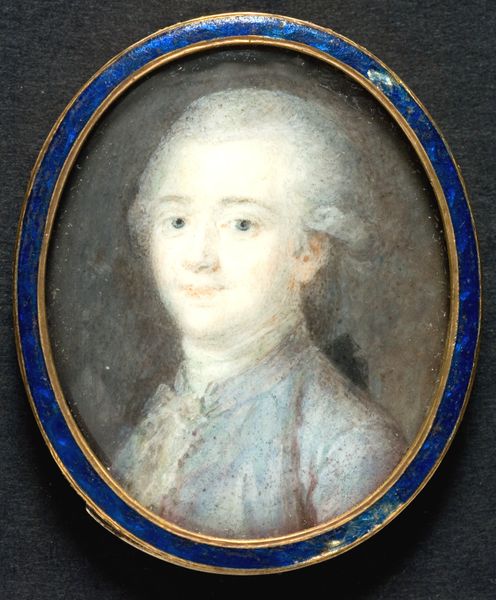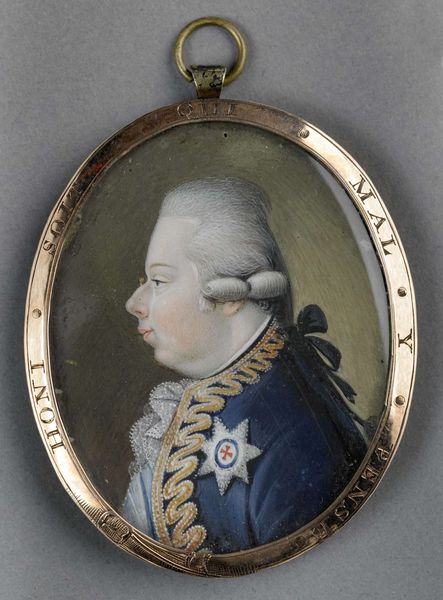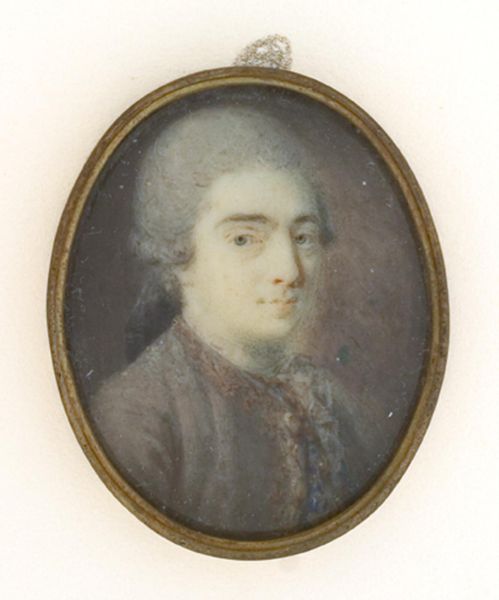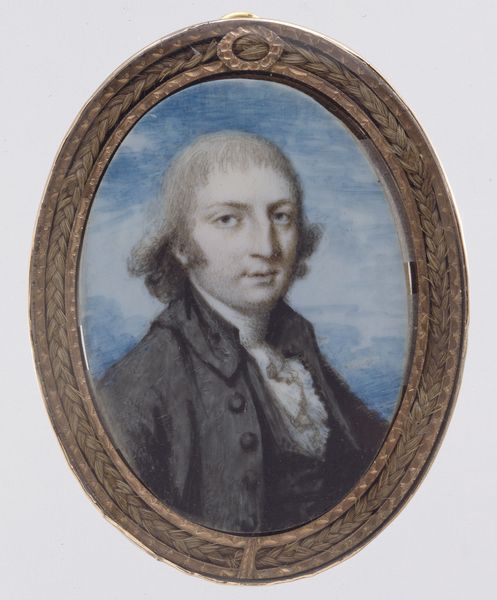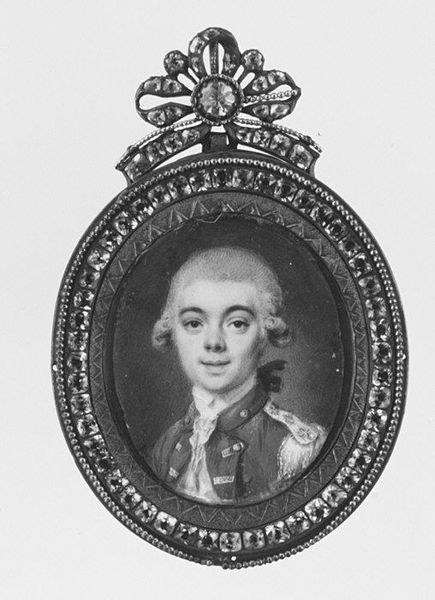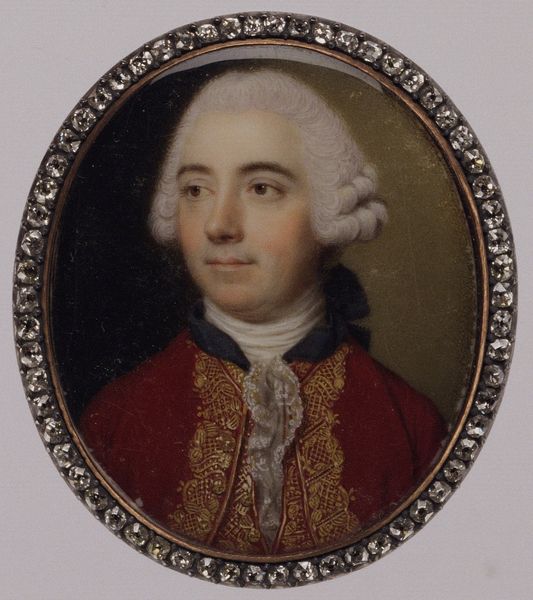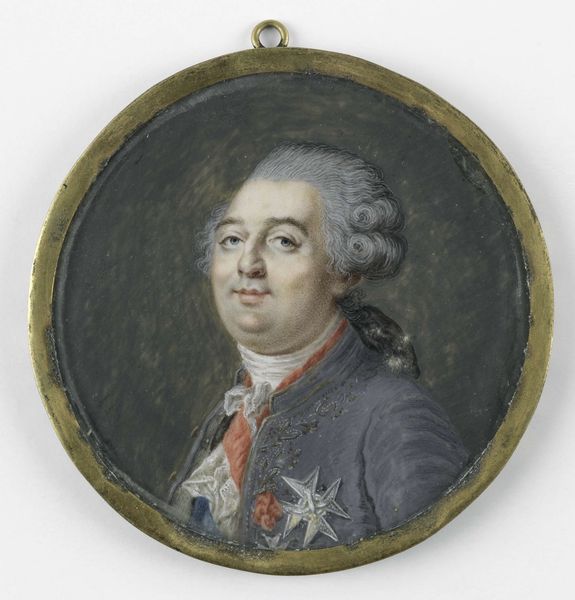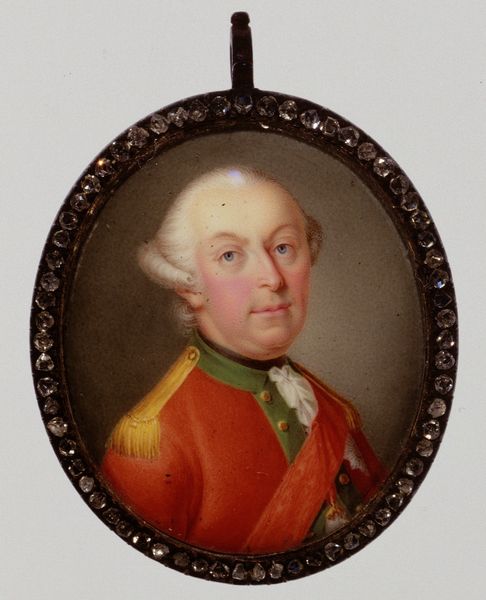
Dimensions: height 5.5 cm, width 4.8 cm, height 6.5 cm, width 5.2 cm, depth 0.5 cm
Copyright: Rijks Museum: Open Domain
Curator: The delicate object before us is titled "Portrait of George III (1738-1820), King of England." Created sometime between 1760 and 1799 by Johann Heinrich Hurter, it’s an oil-on-canvas miniature offering an intimate glimpse into the life of the British monarch. Editor: It strikes me as…surprisingly vulnerable. Given the power usually associated with kings, there's something almost cherubic about him here. Like a porcelain doll ready to be shattered. Curator: That vulnerability is compelling, isn't it? Portrait miniatures like these often functioned as keepsakes, tokens of affection and reminders of connection during a period of extended travel or absence. In many ways, such imagery provided continuity within aristocratic society. Editor: Continuity laced with longing, maybe? Look at the slightly parted lips. Is he about to speak? About to sigh? I see a yearning, a loneliness hidden beneath the regal purple of his coat. And that wig! It's trying so hard to establish authority. Curator: Precisely. Consider how clothing served as both personal expression and coded announcement of social and political identity. George III’s clothing evokes established regal and Rococo conventions while presenting his figure in a more accessible manner for a budding merchant-led, colonial empire. This helped stabilize popular British ideas about leadership and the state during a tumultuous time, including revolutions in the Americas and in France. Editor: So it’s a strategic blend of tradition and accessibility? And speaking of stability... the oval frame and miniature scale give me this sense of enclosure, as if he is intentionally capturing or preserving his essence within the bounds of this tiny world. A bulwark against the uncertainties raging outside his portrait. Curator: Absolutely, the containment contributes to its symbolic weight. By commissioning this intimate image, the king sought to control his image as a tool of statecraft. Remember too, miniatures could travel more easily. It was another way that portraits participated in political strategy during this time. Editor: I love the idea of power traveling light. Gives the whole "divine right of kings" thing a decidedly portable vibe. This conversation reminds me how much is conveyed and concealed through images, and this royal’s enduring game of thrones continues to be captured today through pictures. Curator: Indeed. The weight and the whisper; the monumental captured within the miniature. I am sure many will see something new and uniquely felt in the king's portrait.
Comments
No comments
Be the first to comment and join the conversation on the ultimate creative platform.
